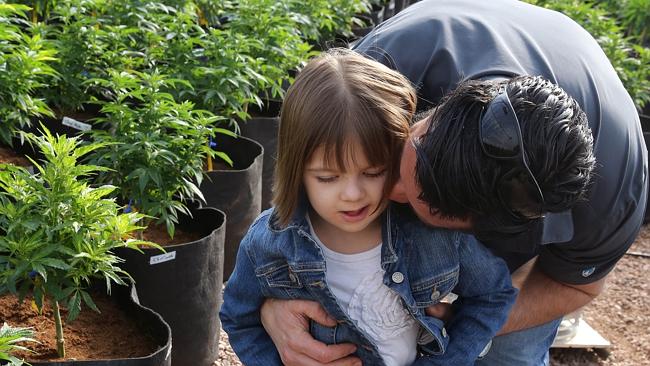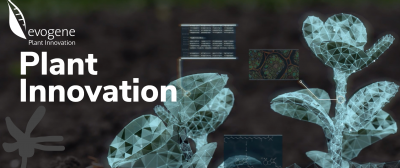CBD saved the life of Charlotte, for whom the high CBD-oil Charlotte’s Web was named.
Nowadays, you can legally buy CBD-infused products practically everywhere. However, these are not FDA approved and regulated medicines, so you can’t really be in control of what you’re buying. Then why not try and grow your own cannabis and make CBD oil products at home?
For a casual gardener, starting to grow cannabis can seem too difficult, but there is a relatively new kind of genetics called autoflowers, and they are quite easy to grow. There are probably thousands of autoflowering strains available on the market today. Most of them are high-THC varieties, but major seed producers have recognized a huge opportunity of CBD medicines and wellness products, so they have bred some high-quality CBD autoflowers and sell them in seed form.
What Type of CBD Oil Products Can be Made from Autoflowers at Home?
CBD products can be roughly divided into four categories:
-
CBD isolate, or pure CBD,
-
wide-range CBD products without any trace amounts of THC,
-
full-range CBD products with less than 0.3% THC (legal limit in the US),
-
full-range CBD products with unknown percentage of THC (probably illegal in at least some jurisdictions).
The first two cannot be realistically made at home because you would need medical grade lab equipment to either isolate CBD from the rest of cannabinoids and other chemicals, such as terpenes and flavonoids, or somehow remove THC from the mix.
The other two types can be made from autoflowers at home. What you need is the right genetics. By way of an example, let’s consider two cultivars by the FastBuds seed company: CBD 1.1 (aka CBD Crack) and CBD 20.1.
While CBD 1.1 contains more or less equal amounts of THC and CBD (around 7% of each), CBD 20.1 has a very high CBD percentage (10.0–20.0%) and very low THC content (0.3–0.8%).
There is a common misconception among the general public that the only therapeutic substance in cannabis is CBD, while THC only makes you high and is a contaminant that should better be avoided.
In fact, evidence suggests that some symptoms and conditions respond more to the combination of CBD and THC or even to the full-plant extracts, rather than a CBD isolate. This is something called entourage effect—when the whole range of natural chemicals in the plant boost each other’s action.
So, it’s really up to you to decide what type of CBD oil product you would like to try as a medicine or supplement. And depending on that decision, choose the right autoflower genetics: relatively high THC or almost no THC. The two strains we mentioned above are good representatives of what the seed market has to offer.
Why Autoflowers?
Worldwide, there are enough cannabis growers—both cash crop farmers and amateurs—who happily invest time and money into their hobby and are not put off by the steep learning curve of cannabis cultivation.
However, CBD is a much more wide-spread phenomenon, and there are probably millions of people who would jump at the chance to grow their own medicine if it were as simple as growing tomatoes.
Luckily, autoflowers are a type of weed plants that any gardener can bring to harvest, especially outdoors.
The main difficulty with traditional cannabis varieties is that they are short-day plants. Outdoors, this means that such a strain will only start to flower in late summer or early fall—when days get short enough. In some colder climates, it’s virtually impossible to bring buds to full maturity before cold weather arrives. In others, it’s possible, but only with a handful of strains. Autoflowers don’t have these limitations because:
-
they only need 2-3 months from seed to finish their life cycle,
-
these 2-3 months can be at any point of the growing season (spring, summer, fall),
-
autoflowers are small and take very little space in your garden,
-
they can be grown in garden soil without special fertilizers.
How to Make CBD Oil at Home
Suppose you have harvested some CBD autoflowers. Those don’t usually look like hemp, but resemble regular medical marijuana, meaning that these plants have bulky and solid flower clusters (buds) that are covered in resin and have a strong smell characteristic of weed.
You can make CBD oil from flowers, or from leaves and stems. The principle is the same, only the concentration of CBD and the quality of the product will differ.
First, you’ll have to dry the plant material, then it’s a good idea to ‘cure’ it which means slowly drying it over a couple of weeks. This process removes such unnecessary compounds as chlorophyll, and the result will be a more effective medicine.
Decarboxylation
You need to activate CBD, as well as THC and other cannabinoids, in buds and leaves by heating them.
It’s very hard to find reliable scientific information as to the temperature and the time needed for successful ‘decarbing’. According to this study, “decarboxylation of CBs has been demonstrated to occur at 37°C and 60°C after exposure for several hours or at 100°C for 60 min” (in an open reactor).
On a recipes page of MagicalButter DecarBox, the following chart is given:
-
THC:- Decarb at 250°F (121°C) for 30-45 minutes
-
CBD: Decarb at 280°F (140°C) for 60-90 minutes
So, preheat the oven, spread the plant material on a tray, and put it into the oven to decarboxylate. At the end of this procedure, the buds/leaves should be completely dry and brown.
CBD Oil Infusion
You can use the same oven, only with different temperature settings, or some other kitchen appliance, such as a slow cooker (crock-pot, instant pot, etc.). Even a microwave can theoretically be used to extract CBD into a carrier oil, but it’s harder to control temperature and heat the materials evenly in a microwave.
Alternatively, you can formulate a CBD oil product with a butter machine. The most popular one to date is MagicalButter which allows you to make CBD oil and cannabutter, as well as CBD-infused glycerin, tinctures, honey, and even sugar.
You’ll also need a carrier oil which you’ll infuse with CBD. We recommend coconut oil as the most healthy option although you can use olive oil, too. You can also add liquid lecithin which helps extract CBD and thus makes the oil more potent.
Crumble your buds, put them into the pot, and pour enough oil that it covers the buds completely. Then heat the mixture. Again, different sources on the Internet give different figures as to the temperature and the time needed, and scientific data is scarce. One study, where pressurized hot water extraction was used, found that the best way to extract CBD was for 45 minutes at 150-160°C (300-320°F).
Probably more reliable info is given on the MagicalButter website mentioned above. They get feedback from users, so their data is good enough for homemade CBD oil products. For coconut oil, they suggest 60 minutes at 160°F (71°C). But this is probably meant for THC. CBD is known to extract better at higher temps. So try and experiment with 10-20 degrees higher than that. In a multicooker, use the low setting which is usually 190-200°F (88-93°C).
Making a Strong CBD Oil from Autoflowers is Easy
If for some reason you can’t purchase CBD oil or don’t want to, you can grow autoflowers in your garden and make CBD oil products from them very easily. All you need is buy seeds of a CBD autoflower strain, bring it to harvest in 2-3 months, and make a CBD oil using simple kitchen appliances and the most basic ingredients.



